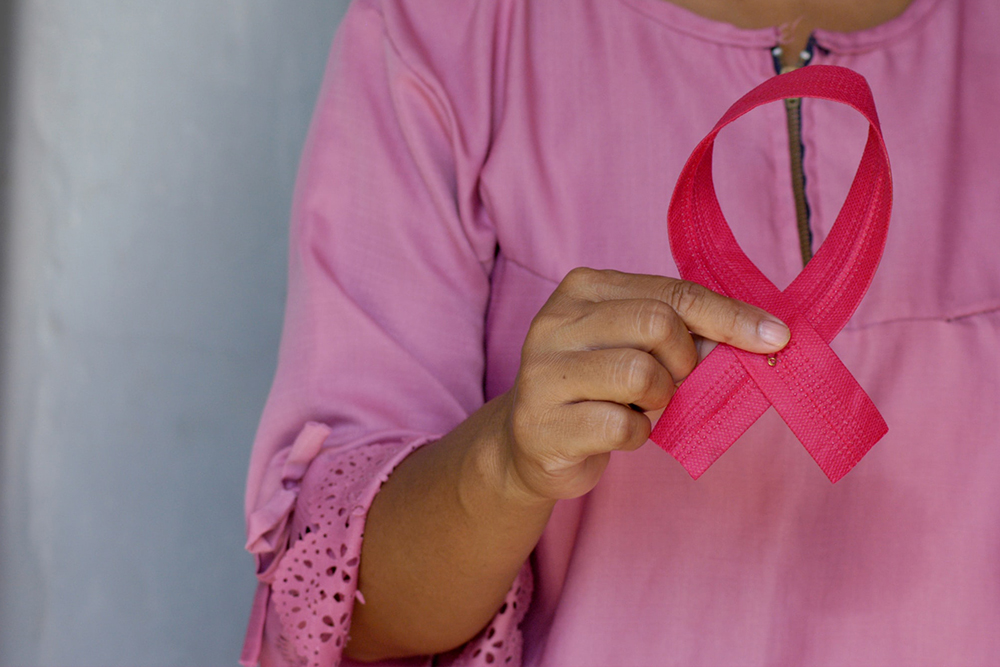
Breast Cancer Awareness Month
Tuesday, 3rd November 2020
Every October, we celebrate Breast Cancer Awareness Month. Excluding skin cancers, breast cancer is the most common cancer in American women. It is estimated that in 2020, approximately 30% of all new women cancer diagnoses will be breast cancer.
During the COVID-19 pandemic, the United States as well as many countries paused their breast cancer screening programs, it is crucial that all women who would have been screened during the pandemic, do not miss out as it is still not too late.
Though the disease kills hundreds of thousands around the world every year, there is hope, with more than 3.5 million breast cancer survivors in the U.S. alone. Better screening processes and early detection have played a substantial role in reducing deaths worldwide, making education a vital part of staying healthy.
It is important to know the warning signs for breast cancer to detect it early and begin treatment as soon as possible. While most breast lumps are harmless, you should immediately speak with your doctor if you find one and have the lump examined.
Some possible symptoms to look for:
- Swelling of all or part of a breast (even if no distinct lump is felt)
- Skin irritation or dimpling
- Breast or nipple pain
- Nipple retraction (turning inward)
- Redness, scaliness, or thickening of the nipple or breast skin
- Nipple discharge (other than breast milk)
- Swollen lymph nodes
If you have noticed any of these signs, you should see a healthcare provider immediately to determine whether or not there is cause for concern.
One of the most important things you can do to keep yourself safe is to perform a breast self- exam once per month. According to the Johns Hopkins Medical center, “40% of diagnosed breast cancers are detected by women who feel a lump.” Performing regular self-exams helps you stay familiar with the look and feel of your breasts, making it easier to detect the warning signs mentioned above.
You can easily perform a self-exam while showering, simply use your fingers to feel around your breasts and armpits in a circular pattern from the outside to the center for any lumps, thickening, or hardened knots. You should also visually inspect your breasts in front of a mirror to check for swelling, changes in the contour or nipples, or dimpling of the skin. You should also squeeze your nipples to check for any discharge. Visit this page for more detailed instructions on how to perform a breast self-exam.
Though performing monthly self-exams is extremely helpful in catching breast cancer early, they are not a substitute for mammograms for women age 40 or over. Mammograms are x-rays of the breast that can help doctors detect breast cancer, sometimes even up to three years before it can be felt according to the CDC.
They are not recommended for women under 40 because they usually have denser breast tissue that makes it more difficult to detect tumors. If you are 45 or older, you should get a regular mammogram, following your doctor’s instructions to make sure that your breasts are healthy and there are no signs of abnormal growths.
In addition, CDC’s National Breast and Cervical Cancer Early Detection Program provides breast and cervical cancer screenings and diagnostic services to low-income, uninsured, and underinsured individuals. Find out if you qualify and get tested because taking the time to know what cancer screening tests are right for you as well as getting a regular screening could save your life.
In comparing breast cancer incidences by race and ethnicity, research indicates that:
- African American women under age 45 have a higher incidence of breast cancer than white women.
- Although the breast cancer diagnosis rate is slightly lower among African American women than white women, breast cancer mortality is higher in African American women.
- Among Hispanic women, breast cancer is the most common cancer and leading cause of cancer death.
- Hispanic/Latina women are more likely than white women to be diagnosed with late-stage breast cancers, and also tend to have larger tumors.
- Asian/Pacific Islander women have lower breast cancer incidences compared to white and black women.
And although you cannot change some factors of avoiding breast cancer, such as getting older or your family history, you can lower your risk by taking care of your health. Here are some steps you can take that can help you reduce your risk of breast cancer:
- Keep a healthy weight. Make sure to choose foods that will help you maintain a healthy weight and ear five or more servings of a variety of vegetables and fruits each day.
- Exercise regularly. Adults should engage in moderate to vigorous activity for at least 30 minutes a day, five days or more a week.
- Don’t drink alcohol, or limit alcoholic drink intake to no more than one per day.
- If you have a family history of breast cancer or inherited changes in your BRCA1 and BRCA2 genes, talk to your doctor about other ways to lower your risk.
- Get regular screenings (along with treatment if diagnosed). A regular mammogram, breast MRI, clinical breast exam, or breast self-exam are all options.
Talk to your doctor if you have any questions or are concerned that you may have breast cancer.
Sources:
- https://www.nationalbreastcancer.org/breast-cancer-facts
- https://ww5.komen.org/BreastCancer/WarningSigns.html
- https://www.nationalbreastcancer.org/breast-self-exam
- https://www.cdc.gov/cancer/breast/basic_info/mammograms.htm
- https://www.nationalbreastcancer.org/diagnostic-mammogram
